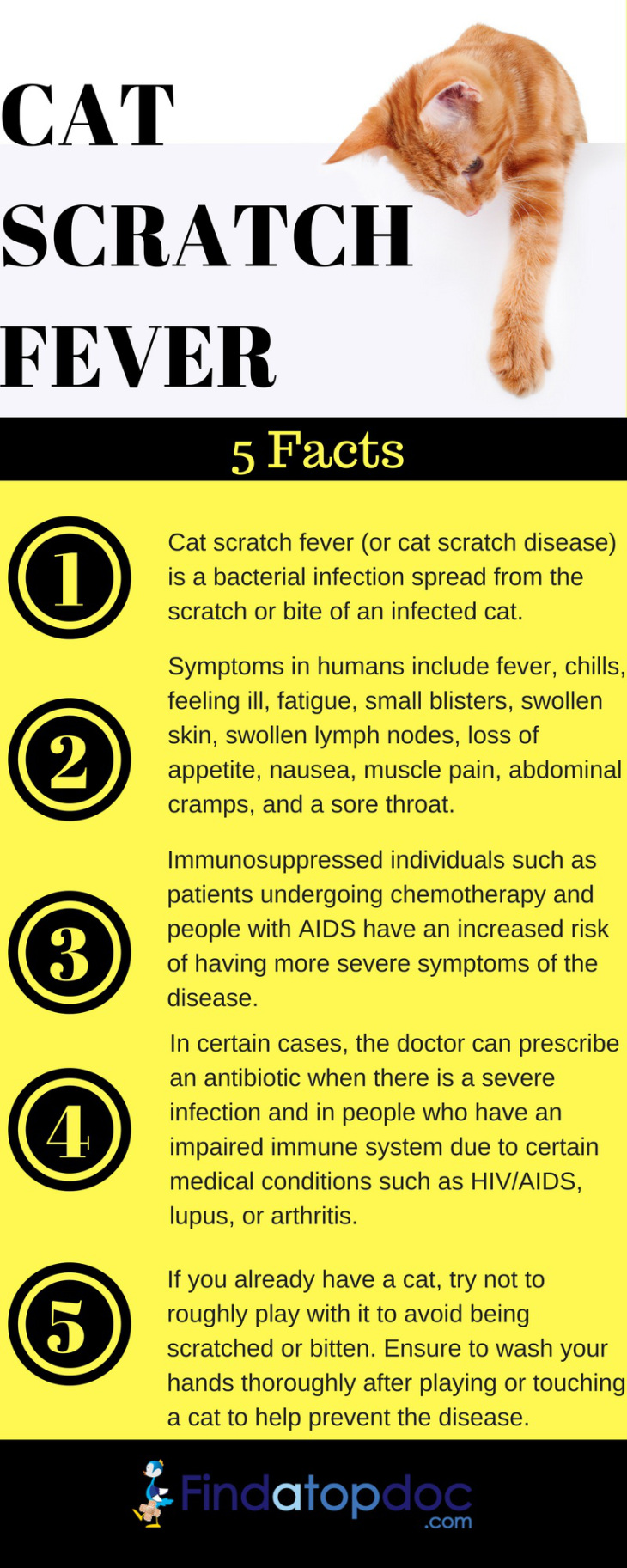Cat scratch disease (CSD), also known as cat scratch fever or subacute regional lymphadenitis, is a bacterial infection affecting lymph nodes that drain the sites of inoculation. Bartonella henselae, a gram-negative rod, is considered the principal etiologic agent. CSD is one of the most common causes of chronic lymphadenopathy in children and adolescents. Patients with CSD usually have a history of sustaining a scratch or bite from a cat. The initial symptom is formation of a papule at the inoculation site, followed by solitary or regional lymphadenopathy within 1-2 weeks. In most patients, the disease resolves spontaneously within 2-4 months.

Source
Symptoms
Feline Symptoms
Cats can carry Bartonella but they don’t get sick from the bacteria, so you can’t always tell if they are carriers. It’s believed that cats contract Bartonella henselae from infected fleas, but there’s no evidence that humans can contract the bacteria directly from fleas. According to the Centers for Disease Control and Prevention, up to 40 percent of cats carry the bacteria at some time in their lives, most commonly when they are kittens. Your vet can test your cat to see if it’s carrying the bacteria, but cats tend to carry the bacteria only for a short time. Treatment isn’t usually recommended.
Human Symptoms
- a bump or blister at the bite or scratch site
- swollen lymph nodes near the bite or scratch site
- headaches
- a low-grade fever
- loss of appetite
Advertisements Share this:





